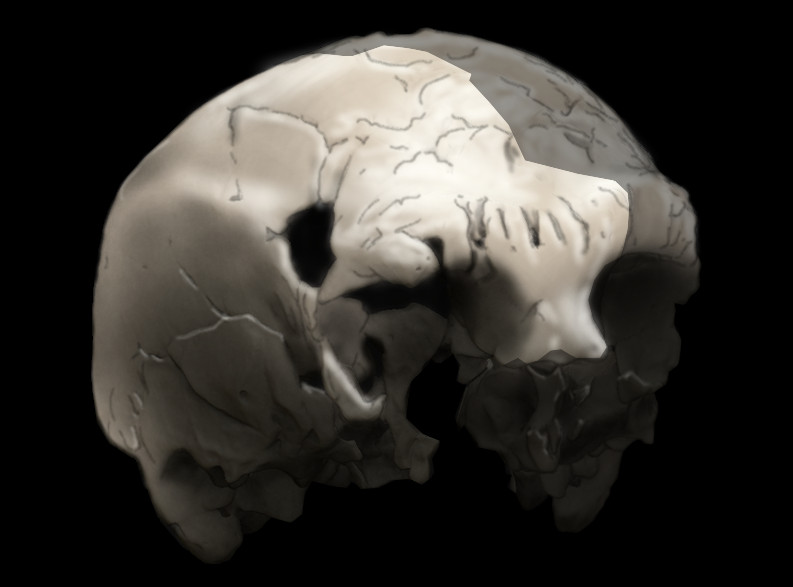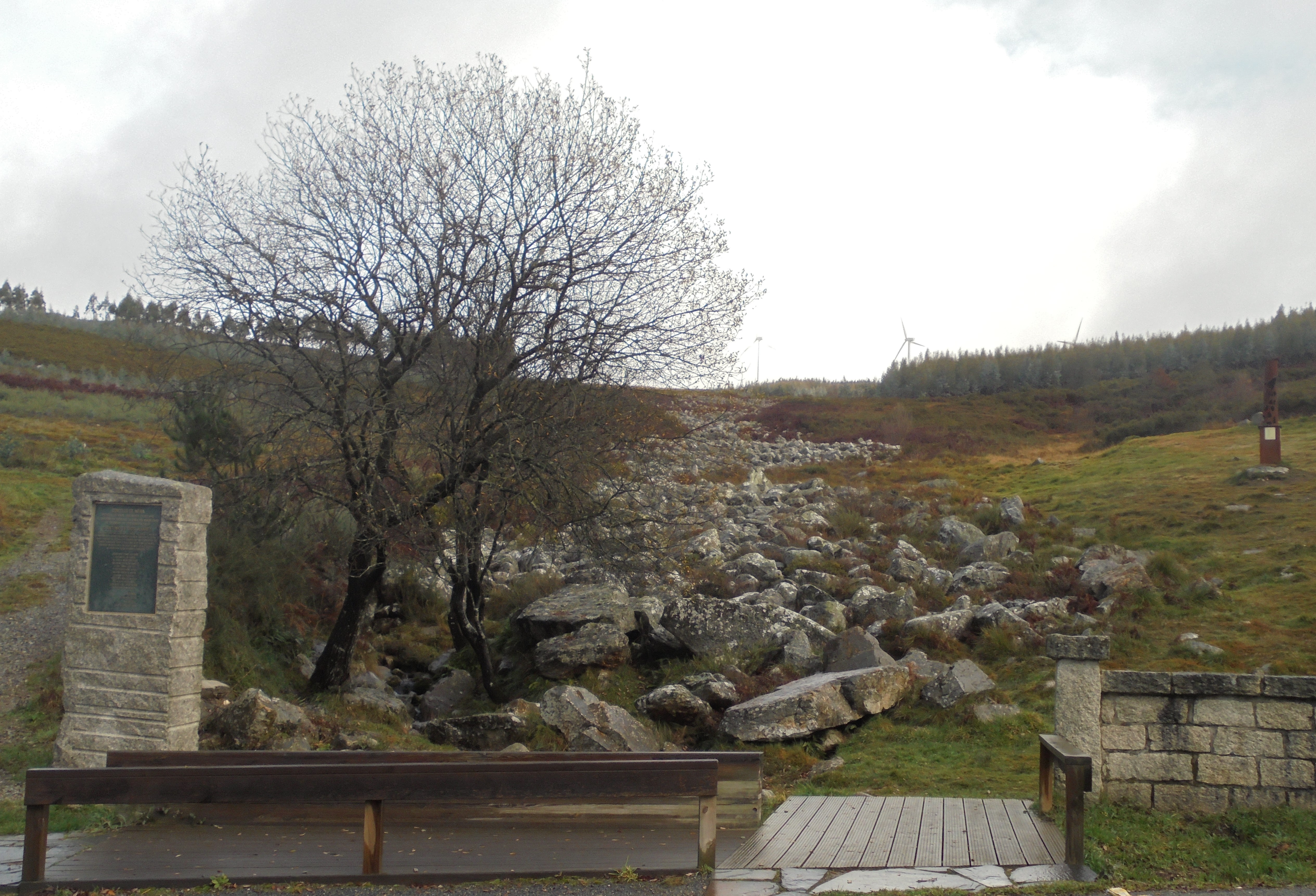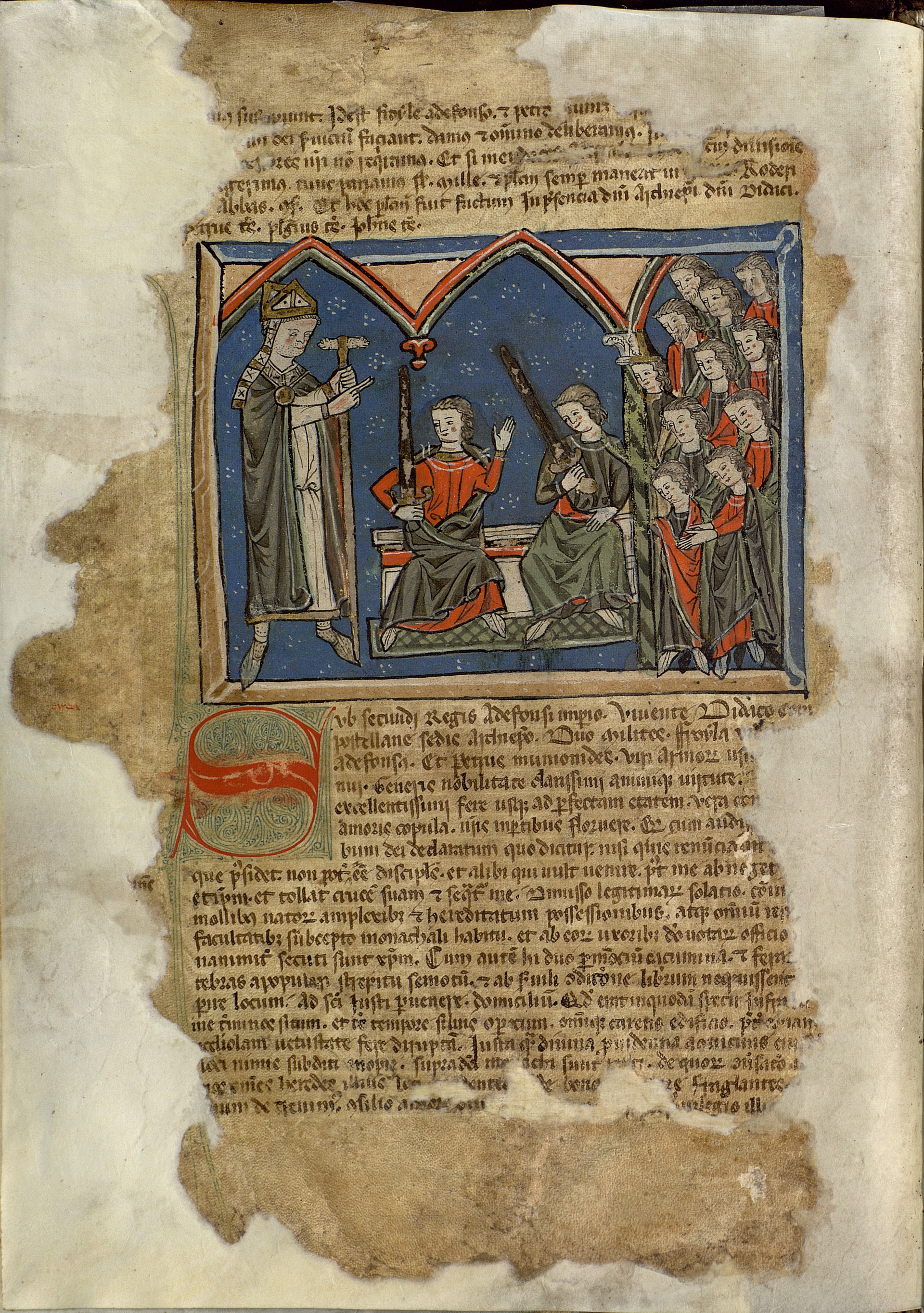|
Siege Of Guimarães
The siege of Guimarães was a military siege that took place between the Portuguese separatist forces and the Leonese forces of Afonso VII, who marched into the County of Portugal in 1127, and attacked the Castle and city of Guimarães, the seat of King Afonso Henriques and the Portuguese nobles who had revolted that year against the authority of Countess Teresa. Background After the death of Count Henry, his widow D. Teresa took over the government of the county during the minority of her son Afonso Henriques. In 1125, he knighted himself in Zamora Cathedral.Francisco da Fonseca Benevides: Rainhas de Portugal: estudos historico com muitos documentos', Volume 1, Typographia Castro Irmão, Lisbon, 1878, pp. 69-70. Resentful of Teresa's closeness to her influential lover, the Count of Trastámara, Fernão Peres de Trava, and her favouritism towards the Galician nobility, who supported her plans to reign as an independent queen, in 1127 the Portuguese nobility of Entre Douro ... [...More Info...] [...Related Items...] OR: [Wikipedia] [Google] [Baidu] |
History Of Portugal
The history of Portugal can be traced from circa 400,000 years ago, when the region of present-day Portugal was inhabited by ''Homo heidelbergensis''. The Roman conquest of the Iberian Peninsula, which lasted almost two centuries, led to the establishment of the provinces of Lusitania in the south and Gallaecia in the north of what is now Portugal. Following the fall of Rome, Germanic tribes controlled the territory between the 5th and 8th centuries, including the Kingdom of the Suebi centred in Braga and the Visigothic Kingdom in the south. The 711–716 invasion by the Islamic Umayyad Caliphate conquered the Visigoth Kingdom and founded the Islamic State of Al-Andalus, gradually advancing through Iberia. In 1095, Portugal broke away from the Kingdom of Galicia. Afonso Henriques, son of the count Henry of Burgundy, proclaimed himself king of Portugal in 1139. The Algarve (the southernmost province of Portugal) was conquered from the Moors in 1249, and in 1255 Lisbon became ... [...More Info...] [...Related Items...] OR: [Wikipedia] [Google] [Baidu] |
Henry, Count Of Portugal
Henry (Portuguese language, Portuguese: ''Henrique'', French language, French: ''Henri''; 1066 – 22 May 1112), Count of Portugal, was the first member of the Capetian House of Burgundy to rule Portugal and the father of the country's first king, Afonso Henriques. Biographical sketch Family relations Born in about 1066 in Dijon, Duchy of Burgundy, Count Henry was the youngest son of Henry, son of Robert I of Burgundy, Henry, the second son of Robert I, Duke of Burgundy. His two older brothers, Hugh I, Duke of Burgundy, Hugh I and Odo I, Duke of Burgundy, Odo I, inherited the duchy. No contemporary record of his mother has survived. She was once thought to have been named Sibylla based on an undated obituary reporting the death of "''Sibilla, mater ducus Burgundie''" (Sibylla, mother of the Duke of Burgundy), under the reasoning that she was not called duchess herself and hence must have been the wife of Henry, the only father of a duke who never himself held the ducal title, ... [...More Info...] [...Related Items...] OR: [Wikipedia] [Google] [Baidu] |
Portugal In The Middle Ages
The Kingdom of Portugal was established from the county of Portugal in the 1130s, ruled by the Portuguese House of Burgundy. During most of the 12th and 13th centuries, its history is chiefly that of the gradual reconquest of territory from the various Muslim principalities (''taifas'') of the period. This process was essentially complete with the ascension of Afonso III of Portugal, the first to claim the title of ''King of Portugal and the Algarve''. The history of Portugal in the period between the death of Afonso III in 1279 and the beginning of the Portuguese Empire in 1415 includes the 1383–1385 Portuguese interregnum and the subsequent transition from the Portuguese House of Burgundy to the House of Aviz. Background Towards the close of the 11th century crusading knights came from every part of Europe to aid the kings of León, Castile and Aragon in fighting the Moors. Among these adventurers was Henry of Burgundy, who, in 1095, married Teresa of León, illegitima ... [...More Info...] [...Related Items...] OR: [Wikipedia] [Google] [Baidu] |
Battle Of São Mamede
The Battle of São Mamede (, ) took place on 24 June 1128 near Guimarães and is considered the seminal event for the foundation of the Kingdom of Portugal and the battle that ensured Portugal's independence. Portuguese forces led by Afonso Henriques defeated forces led by his mother Teresa of Portugal and her lover Fernão Peres de Trava. Following São Mamede, the future king styled himself "Prince of Portugal". He would be called "King of Portugal" starting in 1139 and was recognised as such by neighbouring kingdoms in 1143. Background In late 11th century, Henry of Portugal, a knight and brother of the Duke of Burgundy, went to support the Christians of Hispania. He fought the Moors along with Alfonso VI of León. In honour of his fights in Hispania, the King gave him the County of Portugal. This gift came with a reinstated title; because of attempts by the previous holder some years earlier to assert independence, it had been suppressed. Henry became count of Portugal ... [...More Info...] [...Related Items...] OR: [Wikipedia] [Google] [Baidu] |
Suzerainty
A suzerain (, from Old French "above" + "supreme, chief") is a person, state (polity)">state or polity who has supremacy and dominant influence over the foreign policy">polity.html" ;"title="state (polity)">state or polity">state (polity)">state or polity who has supremacy and dominant influence over the foreign policy and economic relations of another subordinate party or polity, but allows internal autonomy to that subordinate. Where the subordinate polity is called a vassal, vassal state or tributary state, the dominant party is called the suzerain. The rights and obligations of a vassal are called ''vassalage'', and the rights and obligations of a suzerain are called suzerainty. Suzerainty differs from sovereignty in that the dominant power does not exercise centralized governance over the vassals, allowing tributary states to be technically self-ruling but enjoy only limited independence. Although the situation has existed in a number of historical empires, it is con ... [...More Info...] [...Related Items...] OR: [Wikipedia] [Google] [Baidu] |
Minho (river)
The Minho ( ; ) or Miño ( ; ; ; ) is the longest river in the autonomous community of Galicia in Spain, with a length of . It forms a part of the international border between Spain and Portugal. By discharge volume, it is the fourth largest river of the Iberian Peninsula after the Douro, Ebro, and Tagus rivers. The Minho waters vineyards and farmland and is used to produce hydroelectric power. It also delineates a section of the Spanish– Portuguese border. In ancient English maps, it appears as Minno. The source of the Minho lies north of Lugo in Galicia, in a place called '' Pedregal de Irimia''. After about , the river passes just south of the walls of this old Roman city, discharging in average 42 m3/s, and flows south through canyons until the valley widens north of Ourense. The river has been harnessed in reservoirs from Portomarín to Frieira. Along its length, it has the following reservoirs: Belesar with , Peares with, Velle with, Castrelo with, and Frieira ... [...More Info...] [...Related Items...] OR: [Wikipedia] [Google] [Baidu] |
Diego Gelmírez
Diego Gelmírez or Xelmírez (; c. 1069 – c. 1140) was the second bishop (from 1100) and first archbishop (from 1120) of the Catholic Archdiocese of Santiago de Compostela in Galicia, modern Spain. He is a prominent figure in the history of Galicia and an important historiographer of the Iberia of his day. Diego involved himself in many quarrels, ecclesiastical and secular, which were recounted in the , which covered his episcopacy from 1100 to 1139 and serves as a sort of '' gesta'' of the bishop's life. Background He was probably born at Catoira, where his father, Gelmiro or Xelmirio, was the custodian of the castle. He received an education at the court of Alfonso VI, king of León, Galicia and Castile. In 1092, Raymond, count of Galicia, named him his notary and secretary and in 1093 he was the administrator of the Compostelan church. In 1094, Dalmatius was appointed the first bishop of Compostela. Dalmatius died the next year (1095),shortly after returning from th ... [...More Info...] [...Related Items...] OR: [Wikipedia] [Google] [Baidu] |
Infante
Infante (, ; f. ''infanta''), also anglicised as "infant" or translated as "prince", is the title and rank given in the Iberian kingdoms of Spain (including the predecessor kingdoms of Aragon, Castile, Navarre, and León) and Portugal to the sons and daughters (''infantas'') of the king, regardless of age, sometimes with the exception of the heir apparent or heir presumptive to the throne who usually bears a unique princely or ducal title.de Badts de Cugnac, Chantal. Coutant de Saisseval, Guy. ''Le Petit Gotha''. Nouvelle Imprimerie Laballery, Paris 2002, p. 303, 364–369, 398, 406, 740–742, 756–758 , . A woman married to a male ''infante'' was accorded the title of ''infanta'' if the marriage was dynastically approved (e.g., Princess Alicia of Bourbon-Parma), although since 1987 this is no longer automatically the case in Spain (e.g., Princess Anne d'Orléans). Husbands of born ''infantas'' did not obtain the title of ''infante'' through marriage (unlike most heredit ... [...More Info...] [...Related Items...] OR: [Wikipedia] [Google] [Baidu] |
Fernando Pérez De Traba
Fernando (or Fernán) Pérez de Traba (; – 1 November 1155), or Fernão Peres de Trava (), was a nobleman and count of the Kingdom of León who for a time held power over all Galicia. He became the lover of Countess Teresa of Portugal, through whom he attained great influence in that domain, and was the ''de facto'' ruler of the County of Portugal between 1121 and 1128. The '' Poema de Almería'', a Latin poem celebrating one of Alfonso VII's major victories of the ''Reconquista'', records that "if one were to see him ernán one would judge him already a king." Family Fernán was the second son of Pedro Fróilaz de Traba, founder of the House of Traba, and his first wife, Urraca Fróilaz. His family was the most powerful in Galicia at the time, and he himself held properties in the most important Galician cities: Lugo and Santiago de Compostela. Fernán's first appearance in the surviving documentation dates from September 1107, just after the death of Raymond of Galicia, ... [...More Info...] [...Related Items...] OR: [Wikipedia] [Google] [Baidu] |
County Of Trastámara
The County of Trastámara (Spanish ''Condado de Trastámara'') was a tenancy of the crown in the Kingdom of Galicia in the Middle Ages. Its name comes from the Latin ''tra(n)s Tamar(is)'', meaning "beyond orth ofthe Tambre", a river which runs through Galicia. It was regularly granted to men of a single family, the House of Traba from the 11th century into the 13th, after which it was often given for life to others, including Alvar Núñez Osorio and the future King Henry II of Castile, whose dynasty is thus known as the House of Trastámara. On 4February 1445 in San Martín de Valdeiglesias, it was granted as a hereditary possession to Pedro Álvarez Osorio by Juan II of Castile. Counts House of Traba * Froila Bermúdez de Traba (d. 1091) *Pedro Fróilaz de Traba (r. 11251126, d. 1128), son of prec. *Fernando Pérez de Traba (r. 1132–1145, d. 1155), son of prec. * Gonzalo Fernández de Traba (r. 1155–1159, d. 1165), son of Fernando Pérez *Fernando González de Traba ( ... [...More Info...] [...Related Items...] OR: [Wikipedia] [Google] [Baidu] |
Zamora Cathedral
The Cathedral of Zamora is a Catholic Church, Catholic cathedral in Zamora, Spain, Zamora, in Castile and León, Spain, located above the right bank of the Duero It remains surrounded by its old walls and gates. Built between 1151 and 1174, it is one of the finest examples of Spanish Romanesque architecture, Romanesque architecture. History A previous church, also entitled ''El Salvador'' ("Holy Savior") existed at the time of King Alfonso VII of Castile but it was apparently in ruins, so that the king donated the church of St. Thomas in the city to act as cathedral. The church was built under Bishop Esteban of the Roman Catholic Diocese of Zamora in Spain, Diocese of Zamora, under the patronage of Alfonso VII and his sister, Sancha Raimúndez. The date of construction (1151–1174) is traditionally attested by an epigraphy in the northern side of the transept, although recent discoveries have proven that the church had been already begun in 1139, at the time of bishop Bern ... [...More Info...] [...Related Items...] OR: [Wikipedia] [Google] [Baidu] |



